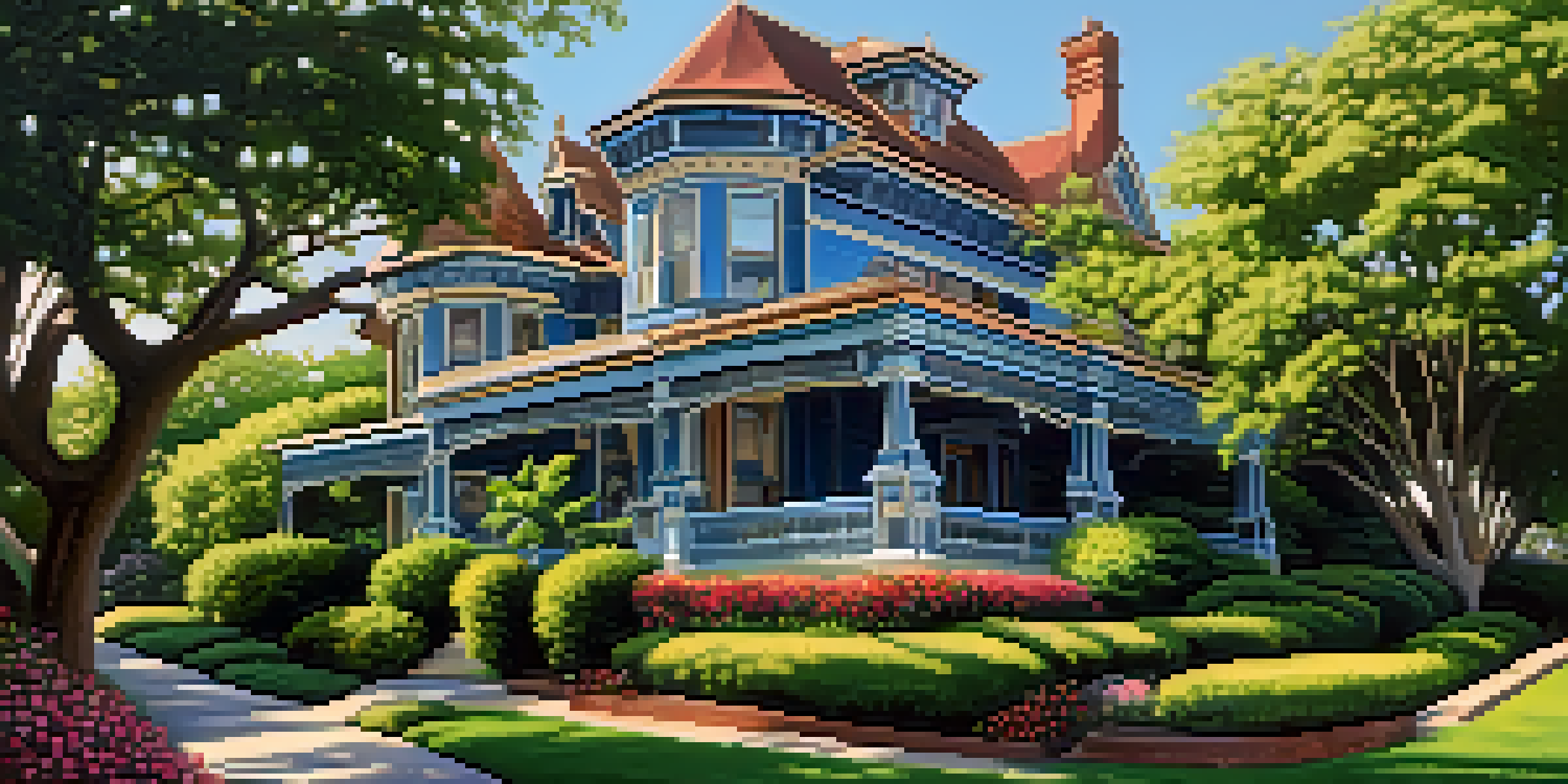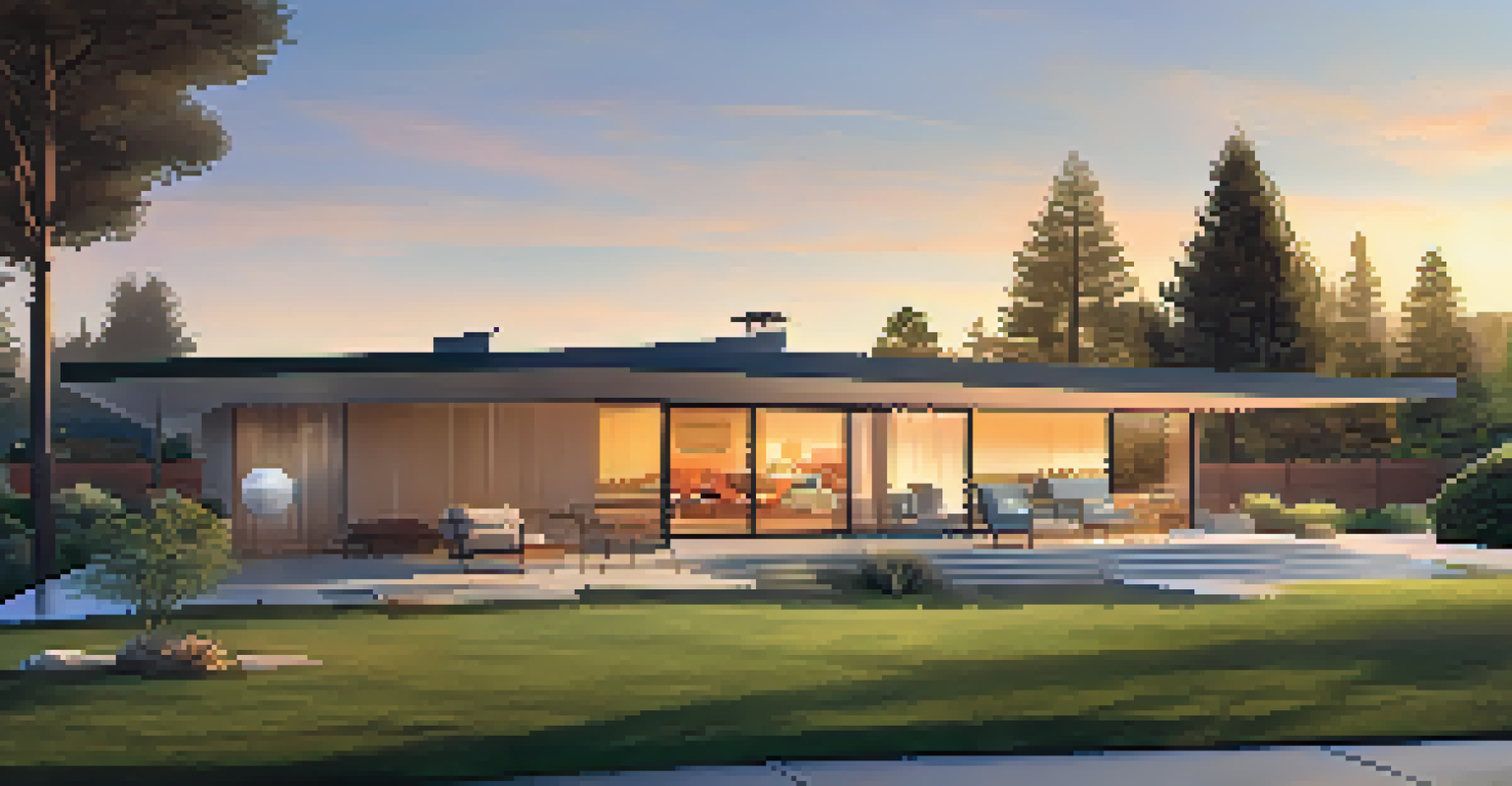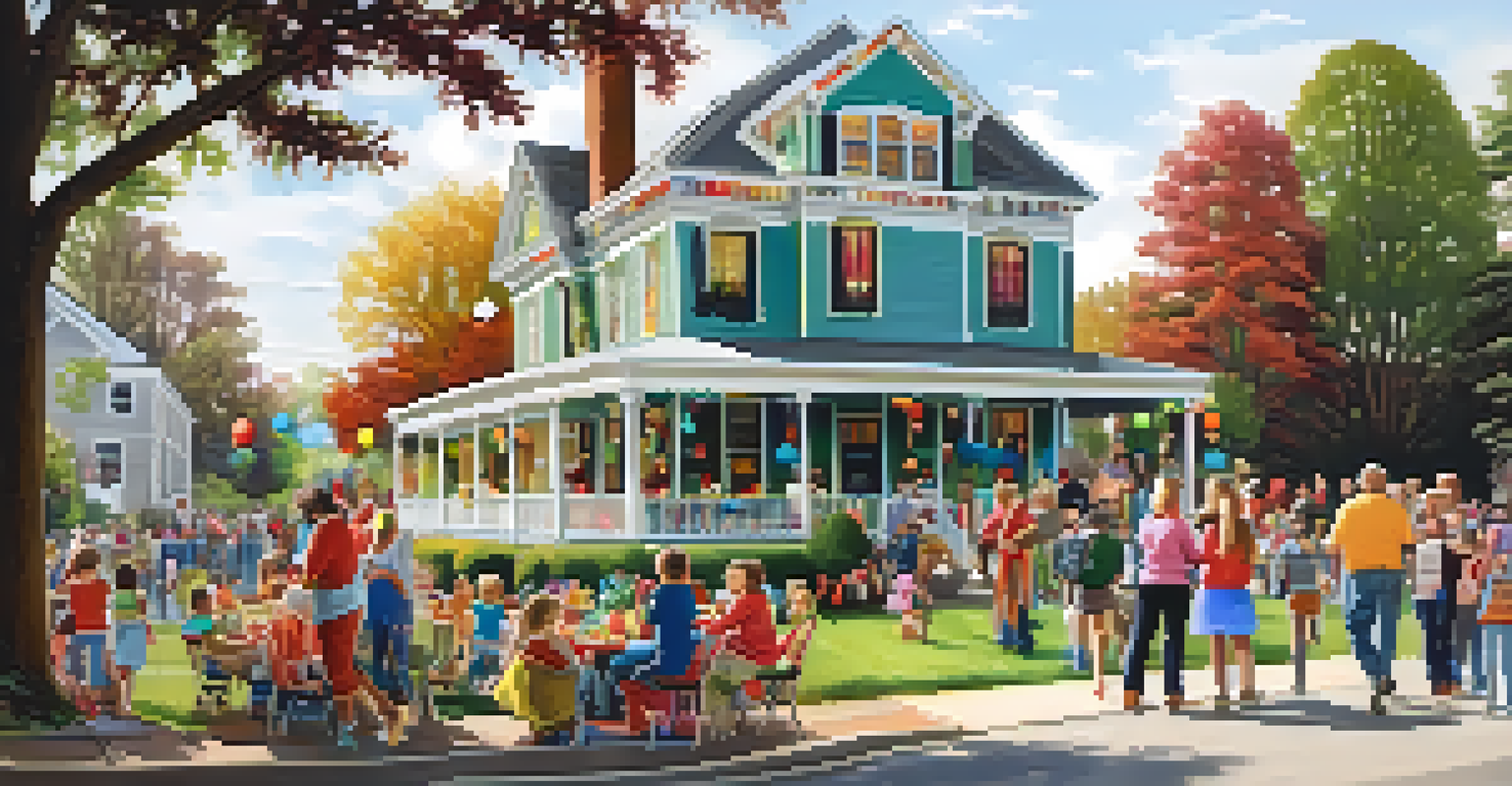The Role of Historic Homes in Austin’s Cultural Landscape

The Significance of Historic Homes in Austin
Historic homes in Austin aren't just buildings; they're stories etched in time. Each structure reflects the rich tapestry of the city’s past, showcasing the architectural styles and cultural influences that have shaped Austin over generations. These homes serve as a reminder of the city's evolution, providing context for its current identity.
Preservation of our heritage is not a luxury; it is a necessity.
In a city known for its rapid growth and modernization, historic homes act as anchors, connecting residents and visitors alike to the roots of Austin. They offer a glimpse into the lives of those who came before us, highlighting the traditions and values that continue to resonate today. This connection fosters a sense of community and belonging.
Moreover, these homes often become community landmarks, attracting tourists and locals who appreciate their historical significance. By preserving these structures, Austin not only honors its heritage but also enhances its cultural landscape, making it a more vibrant and engaging place to live and visit.
Architectural Styles That Define Austin's Historic Homes
One of the fascinating aspects of Austin's historic homes is the variety of architectural styles they embody. From Victorian and Gothic Revival to Craftsman and Mid-Century Modern, each style tells a unique story about the era in which it was built. This architectural diversity adds to the city's charm, making neighborhood strolls a delightful experience.

For instance, the Victorian homes in the Old West neighborhood showcase intricate woodwork and vibrant colors, echoing the opulence of the late 19th century. On the other hand, the clean lines and functional design of the Mid-Century homes reflect a shift towards modernism in the post-war era. Together, they paint a picture of the city’s evolving aesthetic preferences.
Historic Homes Reflect Austin's Identity
These homes serve as vital links to the city's past, showcasing its architectural diversity and cultural heritage.
These historic homes not only serve as visual landmarks but also contribute to the overall character of Austin. They invite conversations about design, history, and community, bridging generational gaps and allowing for a deeper appreciation of the city's evolution.
Preservation Efforts and Their Impact
Preserving Austin's historic homes is vital for maintaining the city’s cultural heritage. Various organizations and local governments work tirelessly to protect these properties from demolition and neglect. Their efforts ensure that future generations can appreciate the history and artistry encapsulated in these structures.
History is not a burden on the memory but an illumination of the soul.
For example, the Austin Historic Landmark Commission plays a crucial role in evaluating properties for historical significance. Through grants and incentives, they encourage homeowners to restore and maintain their historic homes, fostering a culture of preservation. These initiatives not only safeguard the homes but also enhance neighborhood pride.
The impact of these preservation efforts is evident in the city's landscape. Well-maintained historic homes contribute to property values, attract tourism, and create a sense of continuity amid rapid urban development. This balance between growth and preservation is essential for Austin's identity as a vibrant cultural hub.
Cultural Events Celebrating Historic Homes
Austin hosts numerous cultural events that celebrate its historic homes, engaging the community and attracting visitors. Events like the annual Austin Historic Home Tour allow residents to explore these beautiful spaces while learning about their history and significance. It's a wonderful opportunity for people to connect with the past in a tangible way.
These events not only showcase the architecture but also highlight the stories of the families who lived in these homes. Guided tours often feature anecdotes and historical insights that bring the houses to life, creating a deeper appreciation for their place in Austin's narrative. This storytelling aspect fosters a connection between the past and present.
Preservation Efforts Enhance Community
Active preservation initiatives foster neighborhood pride and contribute to property values while maintaining Austin's unique character.
Additionally, cultural festivals often incorporate historic homes as venues, further integrating them into the fabric of community life. By celebrating these homes through events, Austin reinforces its commitment to preserving history while promoting a vibrant cultural scene.
The Role of Historic Homes in Education
Historic homes in Austin also play a vital educational role, serving as living museums for schools and organizations. They offer unique opportunities for students to engage with local history in an immersive way. Field trips to these homes can spark interest in history, architecture, and preservation among young learners.
Through guided tours, workshops, and interactive exhibits, historic homes become platforms for teaching about the city's past. Students can explore architectural styles, learn about historical events, and understand the significance of preservation efforts. This hands-on approach makes learning about history exciting and relevant.
Moreover, many historic homes partner with educational institutions to create programs that foster a sense of stewardship for the future. By instilling values of preservation and community engagement in young people, these homes help ensure that Austin's rich history continues to be celebrated for generations to come.
Community Engagement and Historic Homes
Community engagement is at the heart of preserving and appreciating Austin's historic homes. Local organizations often bring residents together to participate in restoration projects, neighborhood clean-ups, and educational workshops. This collaborative spirit strengthens community bonds and fosters pride in preserving the city's heritage.
Furthermore, many historic homes serve as venues for community gatherings, art shows, and cultural celebrations. By opening their doors to the public, these homes become spaces for connection and creativity, promoting a sense of belonging among residents. They transform from mere structures into vibrant hubs of community activity.
Engagement Activities Connect Residents
Cultural events and community projects centered around historic homes enrich local ties and promote appreciation for Austin's history.
In this way, historic homes not only serve as reminders of the past but also as catalysts for community building. They inspire residents to take an active role in preserving their neighborhood's history while encouraging a shared appreciation for the cultural landscape.
The Future of Historic Homes in Austin
As Austin continues to grow and evolve, the future of its historic homes is a topic of much discussion. Balancing development with preservation poses challenges, but it also presents opportunities for innovative solutions. Engaging the community in conversations about the value of these homes is essential for shaping policies that protect them.
Emerging trends, such as adaptive reuse, offer exciting possibilities for historic homes. By repurposing these structures for modern uses, such as cafes or art studios, cities can breathe new life into them while maintaining their historical integrity. This approach not only preserves the past but also enhances the present.

Ultimately, the future of historic homes in Austin hinges on collective efforts to value and protect them. By fostering a culture of appreciation and understanding, the community can ensure that these iconic structures remain a vital part of Austin's cultural landscape for generations to come.